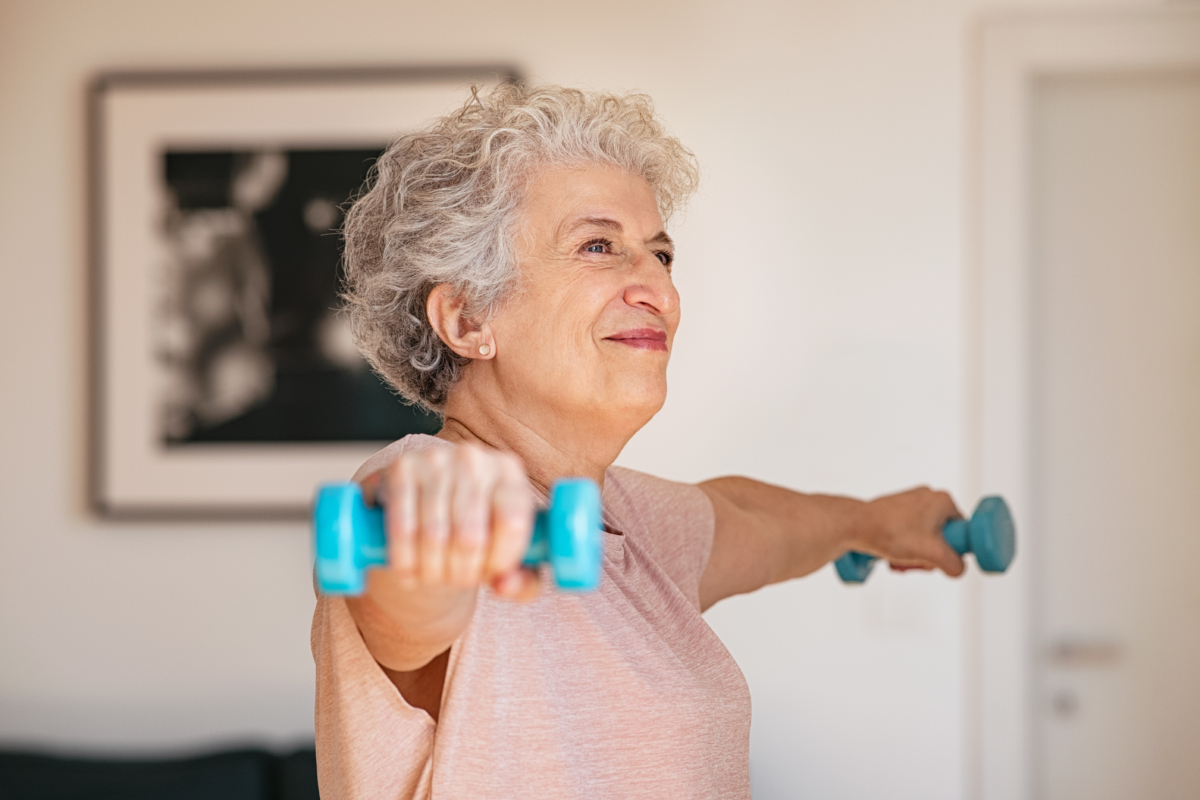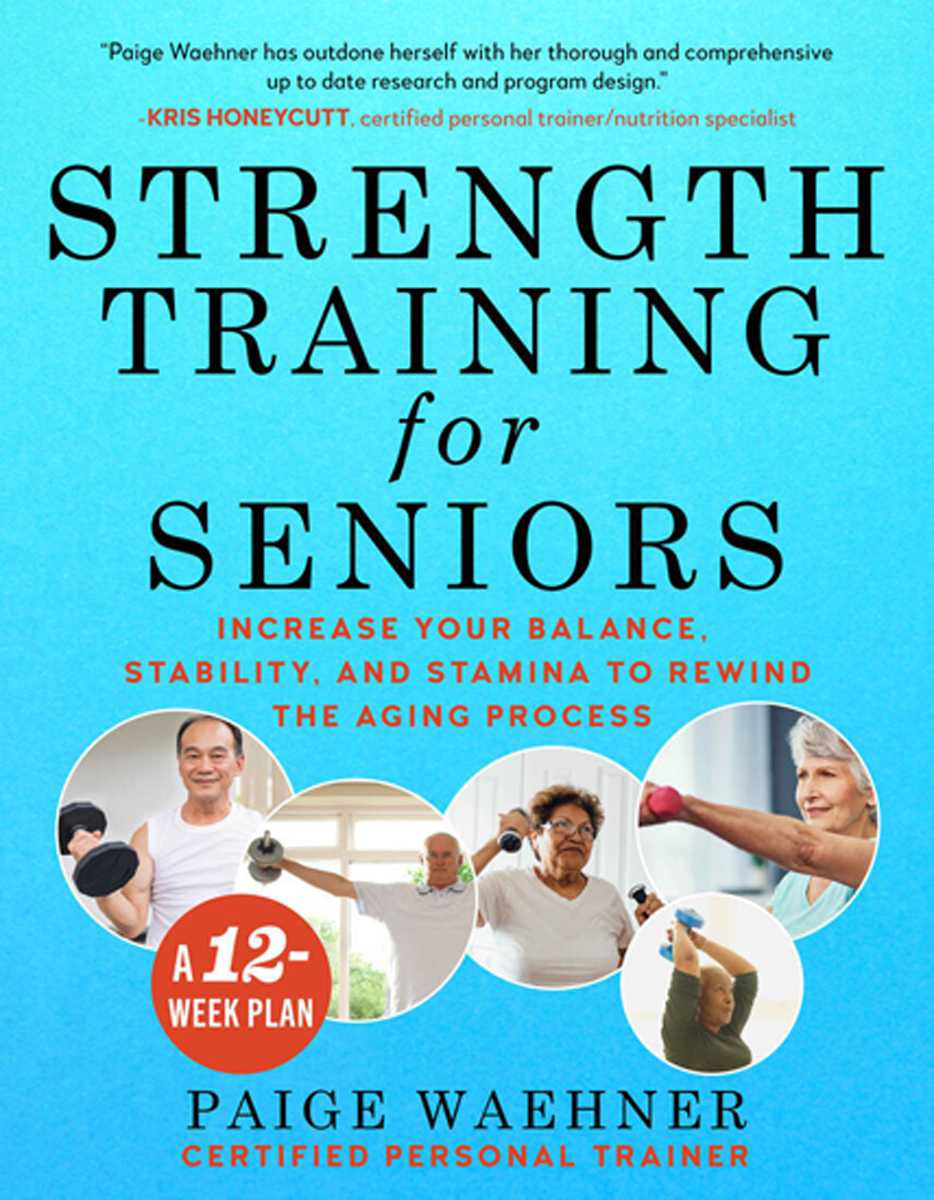


Editor’s Note:
You know you need to exercise, but has your well of motivation run dry over the years? How can you replenish it?
Lack of motivation can be caused by mental barriers to change, fear of injury, or dealing with ongoing physical issues such as pain or illness.
In “Strength Training for Seniors,” Paige Waehner outlines ways that seniors can benefit from strength training—from developing stronger bones and muscles to building confidence and combating anxiety or depression—and how motivation is a key factor in success. The following is an excerpt from the book.
Motivation comes from a variety of different areas, but we can look at them through two different levels: intrinsic, meaning what comes from inside and extrinsic, which is what drives us from outside ourselves.
One of the ways we motivate ourselves is by having something inside that pushes us to reach outside goals, and often this involves things we enjoy. This could be something we want to accomplish, a competitive edge, or something that will give us pleasure and satisfaction to complete.
For some people, exercise is a goal in and of itself. But for others, exercise isn’t the end goal we strive for. That doesn’t mean we don’t want to be healthy, it just means that we want to achieve goals based on our interests, what we enjoy, and what’s meaningful to us.
This might mean wanting to be strong for things like gardening, playing with our kids or grandkids, or functioning better when going about the daily activities of life.
Intrinsic goals are ones that motivate from the inside—we strive for something and then we make it happen.
Some exercise-related intrinsic goals might include:
These are goals we like, that we find interesting, and we get something back from them that is important to us.
Here’s something most of us know, even if we don’t want to admit it: Exercise, in and of itself, isn’t always a goal we strive for. We know it’s good for us. We know we need it … but, like choosing broccoli over macaroni and cheese, it’s not always our first choice.
That’s where a different type of motivation comes in, the kind that comes from the outside. It’s great to have internal goals to drive us, but there are external forces that also motivate us to make a change.
Making use of both of these types of motivation can make regular exercise much more of a reality.
The reality is that most of us rely on a certain amount of extrinsic motivation including:
Often it’s a mix of intrinsic and extrinsic motivational factors that get us moving and, frankly, it doesn’t matter what works … as long as it gets you moving.
Now we get to the bottom of it, the reasons many of us come up with to avoid exercise and this is an area many of us are very, very good at. Whether you call them “reasons” or “excuses,” they typically amount to the same thing—obstacles.
There are plenty of reasons we avoid exercise, and some of them are very good reasons. But, others we can find a way to work around with a little forethought.
Fear of hurting yourself is a healthy fear and one that keeps us safe from a variety of injuries in different aspects of life. But then there’s exercise, an endeavor that can involve heavy weights and those of us moving them around in different directions, sometimes without any idea what we’re doing.
There’s a built-in learning period where you have time to pay attention to how your body responds to different exercises and adjust accordingly. There are also other things you can do to feel more comfortable:
As always, if you question anything, stop. There’s always another day.
It’s rare that any of us make it to our later years without having some wear and tear and things that can get in the way of maintaining mobility. It’s this type of situation that can give you the most problems because you don’t want to exacerbate an ongoing issue.
This kind of thing is best dealt with your doctor and/or a physical therapist, but some very basic advice I give my clients:
The goal is to keep moving in whatever form that looks like. Maybe you do everything seated or using no weights. Feel free to create something that fits where you are. And if you’re not sure, it’s okay to ask for help, whether that’s from a personal trainer, a physical therapist, or a doctor.
Improving health can be a big motivator depending on a person’s situation. Maybe it’s that first time your doctor put you on a medication you never thought you’d need. Maybe it’s having that surgery you weren’t planning on. Either way, things will happen to derail you from basic life tasks including:
One of the most important ways we feel motivated is by taking on a challenge and then conquering that challenge. No doubt you’ve experienced any number of challenging situations and one thing we learn is that we can always do more than we think.
That’s where self-efficacy comes in. Self-efficacy sounds like a fancy word, but it really refers to the fact that you have complete confidence in your abilities. Whether that’s confidence in your own motivation or over your own environment, that belief is what adds to your ability to control what’s going on around you.
Part of this confidence comes through practice. Every time you show up for a workout, every time you reach for a pair of weights, you increase your own sense of belief in yourself. It really is all about believing in your own capacity to do this. And that happens every time you show up.
There are different ways we can experience self-efficacy including:
One important part of this mix is believing in ourselves, especially during difficult situations. Some of us are going through a variety of issues: back problems, arthritis, joint issues, and other things that cause chronic pain.
One of the most important things that keeps us going is knowing we can succeed. What keeps us from believing that? Fear.
Part of believing in ourselves is dealing with the fear that all of us feel from time to time. Fear of failure.
Is it really possible to completely overcome fear of failure? I don’t think so, although working on it is certainly a worthwhile venture. Fear serves a very important purpose in our lives, knowing when to avoid something that may harm us being just one.
When it comes to exercise, fear of failure tops the list of reasons to avoid it. While we’re all born with the same knowledge, there’s some part of us that believes we are just born knowing how to exercise.
It’s that belief that has us walking into gyms thinking that we’re just supposed to know how all these contraptions work and exactly how to use them.
The good news is that no one is born knowing these things and, second, you can learn at your own pace and make decisions that work for your body.
The truth is that some days, you will fail. As humans, it’s what we do, but that doesn’t mean we give up. One way to deal with that failure is to:
This excerpt has been adapted from “Strength Training for Seniors” by Paige Waehner. To buy this book, click here.
Paige Waehner is a certified personal trainer and fitness writer. She is a frequent contributor to verywellfit.com, has been published in Pregnancy Magazine, Desert Paradise, and Runner’s World, and is the author of multiple books on fitness and personal health. She resides in Illinois and can be found at getfitwithpaige.com.
What topics would you like to read about? Please let us know at health@epochtimes.nyc




